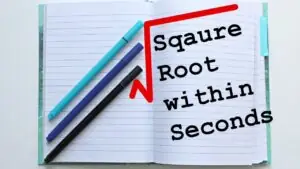TLDR
This video discusses the Collatz Conjecture, a simple yet unsolved problem in mathematics. The conjecture involves a process where any chosen number, when subjected to a specific set of rules (multiplying odd numbers by three and adding one, and dividing even numbers by two), will eventually fall into a repeating loop of 4, 2, 1. Despite its simplicity, the conjecture has remained unsolved and is notorious among mathematicians. Experts have analyzed it through various approaches, including geometric Brownian motion and Benford’s law, but a definitive proof or counterexample has yet to be found. The video explores the complexity and unpredictability of numbers, highlighting how this seemingly simple problem reveals the profound challenges in mathematical proof and theory.

✅ AI Essay Writer ✅ AI Detector ✅ Plagchecker ✅ Paraphraser
✅ Summarizer ✅ Citation Generator
This article is a summary of a YouTube video “The Simplest Math Problem No One Can Solve – Collatz Conjecture” by Veritasium
Key insights
- Simplicity and Complexity: The Collatz Conjecture is presented as a simple mathematical problem that generates complex and unpredictable patterns. Despite its basic rules—multiplying odd numbers by three and adding one, and dividing even numbers by two—it leads to intricately varying sequences for different starting numbers.
- Unpredictable Paths: The sequences generated by applying the Collatz rules (known as hailstone numbers) can vary dramatically, even for consecutive numbers. For example, the number 27 takes a significantly longer and more complex path to reach the 4, 2, 1 loop than its neighboring numbers.
- Geometric Brownian Motion and Benford’s Law: The video discusses how the sequences resemble geometric Brownian motion, similar to stock market fluctuations, and adhere to Benford’s Law, which is a common pattern found in many naturally occurring datasets.
- Brute Force Testing and Patterns: Mathematicians have tested the conjecture extensively (up to 2^68) and found that all tested numbers eventually fall into the 4, 2, 1 loop. However, this extensive testing, while supportive, does not constitute proof of the conjecture.
- Potential for Undecidability: The conjecture might be undecidable. The video refers to John Conway’s FRACTRAN, a Turing-complete mathematical machine, to illustrate that some problems in mathematics might be inherently unsolvable, similar to the Halting Problem in computer science.
- Challenges in Proving the Conjecture: The video highlights the difficulty of proving the conjecture, with mathematicians like Terry Tao making significant progress but still not achieving a definitive proof. The conjecture’s solution remains elusive, and there’s a possibility that it could be false, though no counterexamples have been found.
Timestamped Summary
- 0:00 – 0:21 – Introduction to the Collatz Conjecture, described as a simple yet unsolvable problem in mathematics, with a cautionary note to mathematicians about its complexity.
- 0:21 – 1:33 – Explanation of the Conjecture’s rules: odd numbers are multiplied by three and one is added, even numbers are halved, and the process is repeated until numbers enter a 4, 2, 1 loop.
- 1:35 – 2:00 – The video names the Conjecture after mathematician Lothar Collatz and mentions its various other names, indicating its widespread recognition and multiple origin stories.
- 2:07 – 3:19 – Discussion on why the Collatz Conjecture is infamous among mathematicians, with an emphasis on its deceptive simplicity and the difficulty of proving or disproving it.
- 3:22 – 4:07 – Illustration of how numbers follow diverse paths under the Conjecture’s rules, with examples showing wide variations in the sequence lengths and maximum values reached.
- 4:10 – 6:15 – Analysis of hailstone sequences using statistical methods like geometric Brownian motion and Benford’s Law, demonstrating the randomness and unpredictability of the sequences.
- 6:17 – 7:04 – The video explores the theoretical aspect of the Conjecture, discussing the implications of odd and even number manipulations and the overall trend of sequences to shrink.
- 7:07 – 9:02 – Visualization techniques for representing the paths of numbers in the Collatz sequences are shown, including directed graphs and artistic representations.
- 9:06 – 11:01 – The potential falsehood of the Conjecture is considered, discussing the possibility of a number growing indefinitely or existing in a separate loop, which has not been found yet despite extensive testing.
- 11:03 – 13:04 – Mathematician Terry Tao’s contributions to understanding the Conjecture are highlighted, along with the limitations of these findings in proving the Conjecture.
- 13:07 – 15:10 – Exploration of why proving the Collatz Conjecture is so challenging and the possibility that it might not be true, with a parallel drawn to other mathematical conjectures that were disproven after extensive testing.
- 15:12 – 18:11 – The video discusses the possibility that the Collatz Conjecture could be undecidable, referencing John Conway’s work and the Turing machine concept to explain the difficulty of solving the problem.
- 18:14 – 20:52 – Closing thoughts on the Collatz Conjecture, emphasizing its deceptive simplicity, the challenges in mathematical proof, and the ongoing intrigue it presents to mathematicians and enthusiasts.
Q&A
Follow us on Reddit for more insights and updates.





Comments (0)
Welcome to A*Help comments!
We’re all about debate and discussion at A*Help.
We value the diverse opinions of users, so you may find points of view that you don’t agree with. And that’s cool. However, there are certain things we’re not OK with: attempts to manipulate our data in any way, for example, or the posting of discriminative, offensive, hateful, or disparaging material.